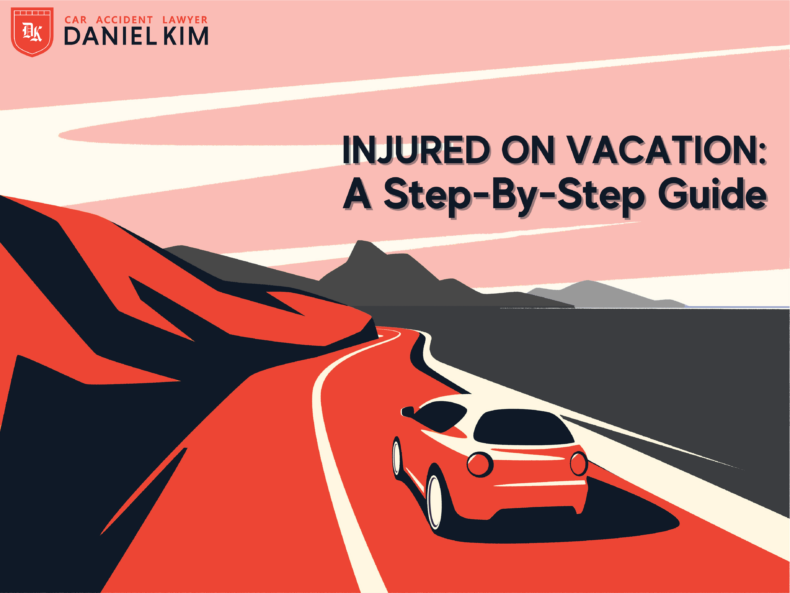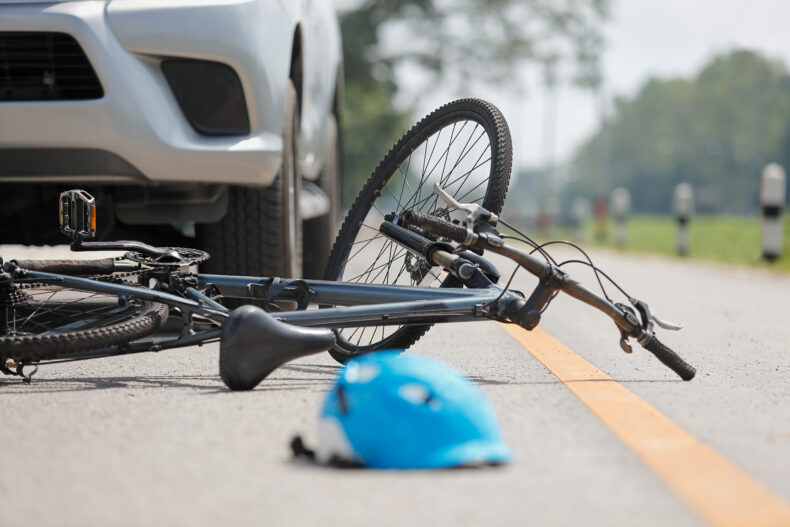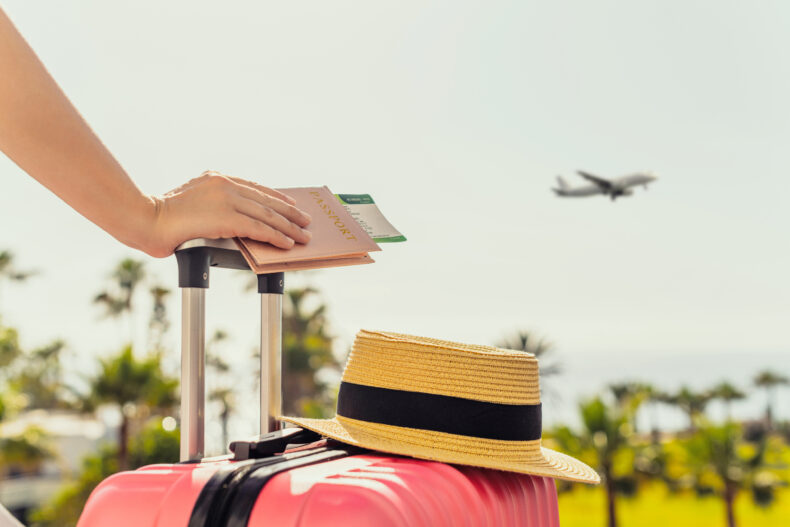Injured On Vacation: A Step-By-Step Guide
From visiting the iconic Hollywood Sign to experiencing the pure childlike wonder of Disneyland and Universal Studios, Southern California is one of the top tourist destinations in the U.S. It is also home to the second largest city after New York City – Los Angeles. Even if you’re a local, you will probably take numerous day trips or “staycations” this summer. However, there is always a risk when driving unfamiliar roads or biking on busy roads. Summer sees a spike in traffic accidents, primarily because there are a lot more people on the road during this season. This guide will help you avoid being injured on vacation, as well as what to do if you suffer a personal injury in California.
Common Accidents When Traveling
Summer is for traveling! However, traveling also comes with some potential hazards that can ruin your vacation and cause serious injuries. Some of the most common accidents when traveling are:
Traffic Accidents
Road accidents, which can involve cars, trucks, motorcycles, buses, pedestrians, and bicycles, are common summer accidents while traveling. According to the Centers of Disease Control (CDC), motor vehicle crashes are the number one cause of non-natural deaths among U.S. citizens traveling abroad. Car accidents can happen anywhere, but they are more likely to happen in unfamiliar areas where you are not familiar with the traffic laws or the road conditions.
Alcohol-Related Accidents
Alcohol affects brain function and impairs judgment, coordination, and reaction time. It can also lead to dehydration, heatstroke, and alcohol poisoning. Alcohol can increase the risk of slips and falls, drowning, violence, and traffic accidents. Drunk driving is one of the most common causes of traffic-related deaths for travelers in the U.S. and abroad. In 2021, 13,384 people died in drunk driving crashes in the U.S.
Water and Aquatic Injuries
With its warm climate and miles of beaches, California is a popular destination for swimming, boating, jet skiing, scuba diving, and surfing. However, accidents can happen due to inexperience or the absence of lifeguards on duty. Drowning is one of the leading causes of death for children under 14 years old in the U.S., according to the World Health Organization. Boating accidents can also cause injuries if there is a lack of familiarity with boating equipment or lack of flotation devices.
Bicycle Accidents
Summer is a popular time for bike riding, especially in Venice Beach or Huntington Beach. If you plan to ride on city streets, remember that cars must share the road with bikes. Bike collisions involving cars, pedestrians, or other cyclists can cause injuries such as head trauma, broken bones, bruises, abrasions, and internal bleeding.
Slips, Trips, and Falls
Slips, trips, and falls are common workplace accidents, but they can also happen at hotels or resorts where floors may be slippery or wet. Be vigilant when walking near a pool or stairs, as a slip and fall accident can cause serious injuries such as sprains, bone fractures, cuts, bruises, or head trauma.
Violence
Violence can happen when traveling to certain countries or areas where crime is high or where there is political unrest or armed conflict. The U.S. Department of State issues travel advisories for different countries and regions ranging from Level 1 (Exercise Normal Precautions) to Level 4 (Do Not Travel). If you are planning to travel abroad, check this list before you go and follow the safety tips provided by the State Department.
Tips for Driving in California
California is road tripping paradise, with beautiful scenic drives up and down the coast and through the desert. To protect all vehicle drivers and passengers, California maintains a mandatory seat belt law, which requires every passenger in a vehicle to wear a seat belt. Wearing a seatbelt will protect you from more serious injuries if you get into a crash. Children under 8 years old or under 4 feet 9 inches must use a child safety seat or booster seat.
If you are driving in California for the first time or not familiar with the local roads and traffic rules, here are some tips to help you stay safe and avoid accidents:
Speed Limits
The speed limit on most California highways is 65 mph, though in some areas it is 70 mph. On two-lane undivided highways, the speed limit is 55 mph. In business, residential areas, and school zones when children are present, the speed limit is 25 mph.
Motorcycle Helmet Law
All motorcyclists and their passengers must wear a helmet, regardless of age or experience. Helmets must meet Department of Transportation safety standards. Additionally, it is important to note that California is the only state to allow motorcycles to ride between traffic lanes (known as lane splitting).
No Texting While Driving
In California, it is illegal to text and drive. You can only use your cell phone for voice communication if it is hands-free, such as a Bluetooth device or a speakerphone. You can also use your cell phone for navigation or music if it is mounted on the windshield or dashboard and you can activate it with a single swipe or tap. Drivers under 18 are not allowed to use any type of cell phone while driving.
Carpool Lanes
On many California freeways, one or more lanes on the far left are designated as carpool lanes (also known as HOV lanes or diamond lanes). These lanes are reserved for vehicles with two or more occupants, including the driver. They are marked by signs and white diamonds painted on the pavement.
Right of Way for Pedestrians and Bicyclists
Pedestrians always have the right of way at crosswalks and intersections, whether they are marked or unmarked. Drivers must stop and yield to pedestrians who are crossing the street or waiting to cross. Bicyclists have the same rights and responsibilities as drivers, except when otherwise indicated by signs or markings. Drivers must share the road with bicyclists and give them at least three feet of clearance when passing them.
Dangerous Roads and Intersections in Southern California
Whether you live in Southern California or you’re just visiting, you should be aware of the most dangerous roads in Orange County and Los Angeles. These are some of the places where accidents happen frequently and where you should be extra cautious:
- Beach Blvd. in Huntington Beach
- Santa Monica Blvd. in Santa Monica
- Wilshire Blvd. in Los Angeles
- Highland Ave. and Hollywood Blvd. in Hollywood
- Newport Blvd. and West 19th St. in Newport Beach
- Winchester Rd. and Ynez Rd. in Riverside County
- Alicia Pkwy. and Jeronimo Rd. in Mission Viejo
- Interstate 5 (I-5)
- Interstate 405 (I-405)
- Interstate 10 (I-10)
- U.S. Highway 101 ( US 101)
- Interstate 15 (I-15)
5 Steps to Take After a Vacation Injury
Going on a vacation should be relaxing and stress-free, but accidents can and do happen. If you or a family member suffers a vacation injury in the U.S. or abroad, there are a few key steps to take to protect your legal rights and well-being.
1. Notify Someone in Charge
If you are injured at a hotel, resort, or retail store, let a manager on duty know. After a road accident, call the local authorities and wait for an officer to arrive. If you were using a rental car, call the rental car company to let them know of the accident.
2. Seek Medical Attention
You should always seek prompt medical attention, even if you think your vacation injuries are minor. Seeing a doctor and getting checked out can prevent an injury from worsening.
3. Gather Evidence
This is especially important if you decide to file an insurance claim. Speak to any witnesses, keep medical records from the hospital or urgent care that treated you, and take pictures of the accident scene and your injuries.
4. Notify Your Insurance Company
Depending on the type of accident and the severity of your injuries, call your auto insurance, health insurance, or other policy and inform them of the accident. Do not say anything that could hurt your insurance claim like “It’s not that bad” or “I should have been more careful.”
5. Contact an Experienced Personal Injury Attorney
A lawyer can help you understand your legal rights under California law. They will explain the process of filing a claim against the party who may be liable for causing you harm.
How to File a Personal Injury Claim in California
Every state follows their own personal injury laws, but the goal is the same: to recover compensation for injuries and losses caused by someone else’s negligence. However, filing a personal injury case in California can be a complex and challenging process, especially if you are dealing with serious injuries and a hostile insurance company. Here are some steps you should take to file a personal injury claim in California:
- Identify the defendant and prove liability: The defendant could be a vehicle driver, a property owner, a manufacturer, or another party. You must prove that they were negligent, meaning that they failed to act with reasonable care and caused your harm.
- Gather evidence and documentation: To support your claim, you need to gather as much evidence and documentation as possible, such as records of medical treatment, photos of where the accident happened, and your injuries.
- Know the statute of limitations: For California personal injury claims, victims must file within two years from the date of the accident. If you miss the deadline, you may lose your right to sue and recover compensation.
Contact an Orange County Personal Injury Lawyer
If you sustained a vacation injury in California, an experienced personal injury lawyer can help you make sense of the situation and go over your legal rights. It is important to hire a lawyer local to California who understands relevant laws and regulations where the accident occurred.
We have offices across Southern California, including Orange County, Los Angeles, San Diego, Bakersfield, and Riverside. We accept cases on a contingency fee basis, meaning we do not collect any upfront legal fees. You only pay if we win your case. Call us 24/7 at (800) 719-9799 or submit your information online here.






